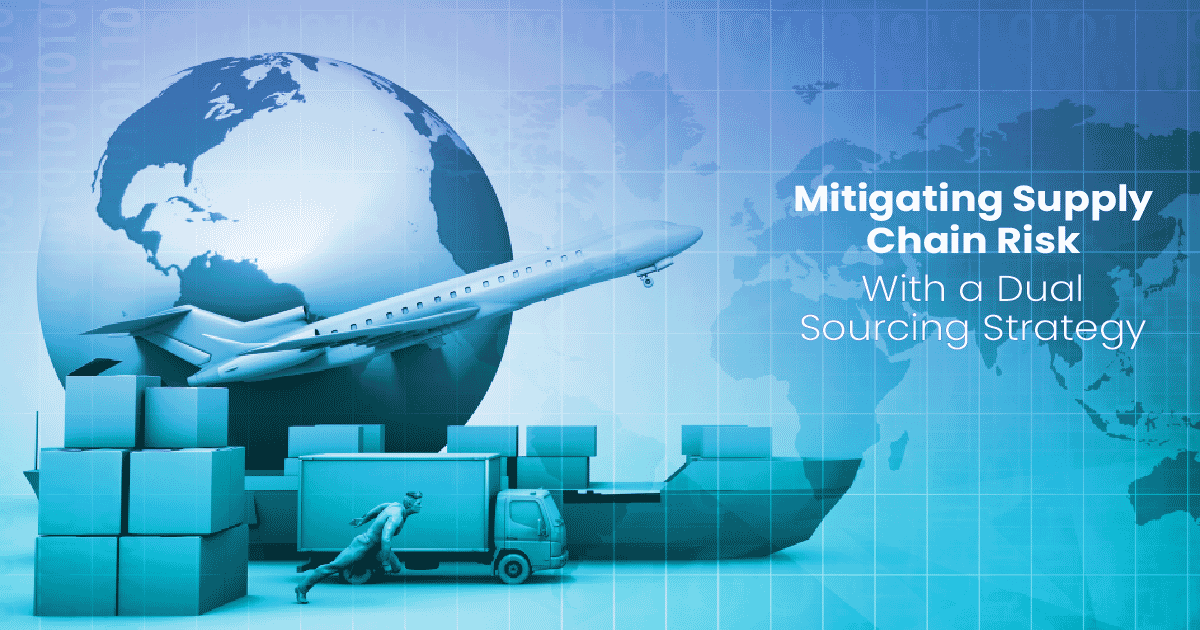Risk Mitigation in Global Supply Chains: Lessons from Recent Events
Written by harrison

Proactive Risk Identification
Geopolitical Analysis:
Examine the importance of geopolitical analysis in identifying potential risks in global supply chains. Showcase case studies of businesses that proactively assess geopolitical factors, such as trade policies, sanctions, and political stability, to anticipate and mitigate potential disruptions.
Supplier Diversity Programs:
Highlight the role of supplier diversity programs in risk identification. Discuss how businesses implement programs that diversify their supplier base, reducing dependence on a single source and mitigating risks associated with geopolitical tensions, trade disputes, or sudden policy changes.
Resilient Supply Chain Design
Multi-tier Visibility:
Explore the need for multi-tier visibility in supply chain design. Case studies could focus on businesses that utilize advanced technologies, such as blockchain and IoT, to gain real-time insights into their entire supply chain, enabling them to identify vulnerabilities and respond swiftly to disruptions.
Agile Network Structures:
Discuss the benefits of agile network structures in global supply chains. Showcase businesses that have adopted flexible and adaptable supply chain models, allowing them to reconfigure operations quickly in response to changing conditions, market demands, or unexpected disruptions.
Demand Forecasting and Inventory Management
Data-driven Forecasting:
Examine the role of data-driven forecasting in mitigating supply chain risks. Case studies might showcase businesses that leverage predictive analytics, machine learning, and historical data to enhance accuracy in demand forecasting, reducing the likelihood of inventory shortages or surpluses.
Buffer Stock Strategies:
Highlight the implementation of buffer stock strategies as a risk mitigation measure. Discuss how businesses strategically maintain surplus inventory to act as a buffer during disruptions, ensuring continuity in supply even when faced with unexpected challenges like production delays or transportation issues.
Technology Integration for Visibility
Cloud-based Supply Chain Platforms:
Discuss the advantages of cloud-based supply chain platforms in enhancing visibility. Showcase case studies of businesses that leverage cloud technologies to centralize data, facilitate real-time collaboration, and improve overall visibility across the entire supply chain network.
Advanced Analytics for Risk Assessment:
Explore the use of advanced analytics for risk assessment in supply chains. Highlight businesses that employ sophisticated analytical tools to assess potential risks, evaluate the impact of disruptions, and develop proactive strategies for risk mitigation.
Supplier Relationship Management
Collaborative Partnerships:
Discuss the importance of collaborative partnerships in supplier relationship management. Showcase case studies of businesses that prioritize open communication, transparency, and collaboration with suppliers, fostering strong relationships that contribute to mutual support during times of crisis.
Risk-sharing Contracts:
Highlight the implementation of risk-sharing contracts as a proactive measure. Explore how businesses structure contracts with suppliers to include risk-sharing provisions, aligning incentives and responsibilities to ensure a shared commitment to overcoming challenges and disruptions.
Compliance and Regulatory Adherence
Regulatory Compliance Protocols:
Examine the significance of regulatory compliance protocols in global supply chains. Showcase businesses that implement robust protocols to ensure compliance with international regulations, trade standards, and industry-specific requirements, reducing the risk of legal and regulatory disruptions.
Continuous Monitoring and Audits:
Highlight the role of continuous monitoring and audits in maintaining compliance. Discuss how businesses conduct regular assessments of their supply chain partners, ensuring adherence to established standards and swiftly addressing any compliance issues that may arise.
Crisis Communication and Stakeholder Engagement
Transparent Communication Plans:
Discuss the development of transparent communication plans for crisis situations. Showcase case studies of businesses that have predefined communication strategies, enabling them to communicate effectively with stakeholders, customers, and the public during supply chain disruptions.
Stakeholder Collaboration Platforms:
Explore the use of stakeholder collaboration platforms for effective crisis management. Highlight businesses that leverage technology to create platforms for real-time communication and collaboration with stakeholders, fostering a collective approach to problem-solving during disruptions.
Environmental and Climate Risk Considerations
Climate Resilience Strategies:
Discuss the integration of climate resilience strategies in supply chain risk mitigation. Showcase case studies of businesses that assess and address climate-related risks, implementing strategies to adapt to changing environmental conditions and ensure the sustainability of their supply chains.
Sustainable and Ethical Sourcing:
Highlight the importance of sustainable and ethical sourcing practices. Discuss how businesses prioritize suppliers with environmentally friendly and socially responsible practices, reducing the risk of supply chain disruptions related to environmental or ethical issues.
Talent Management and Skill Development
Supply Chain Talent Development:
Examine the role of talent development in supply chain risk mitigation. Showcase businesses that invest in training and upskilling their supply chain teams, ensuring they possess the necessary skills to navigate complexities, analyze risks, and implement effective mitigation strategies.
Cross-functional Collaboration:
Highlight the benefits of cross-functional collaboration in supply chain management. Discuss how businesses foster collaboration between different departments, such as logistics, procurement, and risk management, to create a holistic approach to supply chain risk mitigation.
Post-event Analysis and Continuous Improvement
Post-event Assessments:
Discuss the importance of post-event assessments in supply chain risk management. Showcase businesses that conduct thorough analyses after disruptions, identifying lessons learned, areas for improvement, and implementing changes to enhance overall supply chain resilience.
Continuous Monitoring and Adaptation:
Highlight the need for continuous monitoring and adaptation in supply chain risk mitigation. Discuss how businesses establish mechanisms for ongoing risk assessment, monitoring emerging threats, and adapting strategies to ensure they remain proactive in mitigating evolving supply chain risks.
Technology and Electronics
Semiconductor Shortages:
Explore how the technology and electronics industry mitigates risks related to semiconductor shortages. Discuss case studies of companies that employ strategies such as diversified sourcing, strategic partnerships with semiconductor manufacturers, and proactive monitoring to navigate disruptions in the semiconductor supply chain.
Rapid Technological Advancements:
Highlight the challenges posed by rapid technological advancements in the technology sector. Showcase businesses that implement agile supply chain strategies, invest in research and development, and foster close collaborations with suppliers to stay ahead of technological shifts and mitigate risks associated with obsolete components.
Automotive and Manufacturing
Just-in-Time Manufacturing Risks:
Examine the risks associated with just-in-time manufacturing in the automotive and manufacturing industries. Discuss case studies of businesses that balance the benefits of lean manufacturing with the need for buffer stocks and strategic inventory management to mitigate disruptions caused by unexpected demand fluctuations or supply chain interruptions.
Supplier Reliance in Automotive Production:
Discuss the challenges of supplier reliance in automotive production. Showcase how companies implement dual-sourcing strategies, conduct regular risk assessments on critical suppliers, and establish contingency plans to mitigate risks associated with supplier disruptions in the automotive supply chain.
Healthcare and Pharmaceuticals
Regulatory Compliance in Drug Manufacturing:
Explore how the healthcare and pharmaceutical industries navigate regulatory compliance risks in drug manufacturing. Discuss case studies of companies that prioritize adherence to stringent regulatory standards, conduct regular audits, and implement risk-sharing agreements with suppliers to ensure a stable pharmaceutical supply chain.
Global Health Crises:
Highlight the challenges posed by global health crises in the pharmaceutical sector. Showcase businesses that leverage technology for real-time monitoring of health-related risks, establish flexible manufacturing processes, and collaborate with global health organizations to ensure uninterrupted access to essential medicines during crises.
Consumer Goods and Retail
Seasonal Demand Fluctuations:
Examine how consumer goods and retail industries address risks related to seasonal demand fluctuations. Discuss case studies of businesses that implement data-driven demand forecasting, collaborate closely with suppliers, and utilize agile supply chain practices to adapt to shifting consumer preferences and demand patterns.
E-commerce Supply Chain Resilience:
Highlight the challenges and strategies for building resilience in e-commerce supply chains. Showcase businesses that invest in advanced logistics, adopt technology for real-time order tracking, and implement flexible fulfilment strategies to mitigate risks associated with the dynamic nature of e-commerce operations.
Energy and Utilities
Geopolitical Risks in Energy Supply:
Explore how the energy and utilities sector mitigates geopolitical risks in the global energy supply chain. Discuss case studies of companies that diversify energy sources, invest in renewable energy projects, and establish contingency plans to navigate disruptions caused by geopolitical tensions or regulatory changes.
Sustainability Challenges:
Highlight the sustainability challenges faced by the energy industry. Showcase businesses that implement sustainable and ethical sourcing practices, invest in clean energy initiatives, and proactively address environmental concerns to ensure a resilient and sustainable global energy supply chain.
Aerospace and Defense
Supply Chain Security in Defense Manufacturing:
Examine how the aerospace and defense industry addresses supply chain security risks in defense manufacturing. Discuss case studies of companies that implement stringent security protocols, collaborate with trusted suppliers, and leverage technology for secure communication to mitigate risks associated with the defense supply chain.
Technology Transfer Risks:
Discuss the challenges posed by technology transfer risks in aerospace and defense. Showcase businesses that implement robust intellectual property protection measures, conduct thorough due diligence on technology transfer agreements, and establish clear contractual frameworks to mitigate risks associated with technology transfer.
Food and Agriculture
Agricultural Supply Chain Resilience:
Explore how the food and agriculture sector builds resilience in the agricultural supply chain. Discuss case studies of companies that invest in sustainable farming practices, implement technologies for precision agriculture, and establish partnerships with local farmers to mitigate risks associated with climate variability and natural disasters.
Food Safety and Quality Assurance:
Highlight the challenges of ensuring food safety and quality in the agricultural supply chain. Showcase businesses that implement stringent quality control measures, leverage technology for real-time monitoring, and establish traceability systems to quickly identify and address potential risks in the food supply chain.
Retail and Fashion
Fast Fashion Risks:
Examine the risks associated with fast fashion in the retail industry. Discuss case studies of businesses that balance the need for rapid production cycles with sustainable and ethical sourcing practices, implement circular economy initiatives, and adapt supply chain strategies to mitigate environmental and reputational risks.
Supply Chain Transparency in Fashion:
Highlight the importance of supply chain transparency in the fashion industry. Showcase businesses that adopt transparency initiatives, utilize blockchain technology for traceability, and engage with consumers to communicate their commitment to ethical sourcing and responsible manufacturing in the fashion supply chain.
Chemical and Process Industries
Regulatory Compliance in Chemical Manufacturing:
Explore how the chemical and process industries address regulatory compliance risks in manufacturing. Discuss case studies of companies that prioritize compliance with chemical regulations, conduct thorough risk assessments, and collaborate with regulatory bodies to ensure a resilient and compliant chemical supply chain.
Environmental Impact and Sustainability:
Highlight the challenges and strategies for mitigating environmental impact and promoting sustainability in the chemical industry. Showcase businesses that invest in green technologies, adopt circular economy principles, and collaborate with stakeholders to address environmental concerns and build a sustainable chemical supply chain.
Logistics and Transportation
Disruptions in Global Shipping:
Examine the challenges of disruptions in global shipping for logistics and transportation. Discuss case studies of businesses that implement contingency plans, diversify transportation modes, and leverage technology for route optimization to mitigate risks associated with disruptions in the global transportation network.
Technology Adoption in Logistics:
Highlight the benefits of technology adoption in mitigating risks in logistics and transportation. Showcase businesses that invest in technologies such as IoT, blockchain, and predictive analytics to enhance visibility, optimize transportation routes, and respond effectively to disruptions in the logistics supply chain.
Financial Services and Banking
Cybersecurity Risks in Financial Transactions:
Explore how the financial services and banking sector addresses cybersecurity risks in global financial transactions. Discuss case studies of companies that implement robust cybersecurity measures, conduct regular audits, and collaborate with regulatory authorities to ensure the security and integrity of financial supply chains.
Regulatory Changes in International Finance:
Highlight the challenges posed by regulatory changes in international finance for the financial services sector. Showcase businesses that stay informed about regulatory developments, adapt compliance protocols, and establish agile financial supply chain strategies to mitigate risks associated with regulatory changes.
Asia-Pacific Region
Regional Disasters and Natural Calamities:
Explore how businesses in the Asia-Pacific region mitigate risks associated with regional disasters and natural calamities. Discuss case studies of companies that incorporate disaster response strategies, diversify sourcing across regions, and collaborate with local authorities to navigate disruptions caused by earthquakes, typhoons, or other natural events.
Trade Policy Shifts:
Highlight the challenges posed by trade policy shifts in the Asia-Pacific region. Showcase businesses that stay informed about evolving trade policies, conduct scenario planning, and establish flexible supply chain structures to adapt swiftly to changes in tariffs, trade agreements, and geopolitical dynamics.
North America
Cross-border Supply Chain Challenges:
Examine the challenges of cross-border supply chains in North America. Discuss case studies of businesses that navigate complexities related to customs regulations, border closures, and transportation disruptions, implementing strategies such as localized sourcing, dual-sourcing, and efficient border-crossing processes.
Technological Advancements and Automation:
Highlight how businesses in North America leverage technological advancements and automation in supply chain management. Showcase companies that invest in advanced technologies, such as robotics and AI, to enhance efficiency, reduce dependency on manual processes, and mitigate risks associated with labour shortages or disruptions.
Europe
Brexit and Regulatory Changes:
Explore how businesses in Europe mitigate risks associated with Brexit and regulatory changes. Discuss case studies of companies that adapt supply chain strategies to comply with new trade regulations, conduct impact assessments, and establish contingency plans to navigate uncertainties arising from geopolitical shifts.
Sustainability and Environmental Regulations:
Highlight the importance of sustainability and environmental regulations in the European supply chain. Showcase businesses that prioritize eco-friendly practices, adhere to strict environmental standards, and integrate sustainability considerations into supply chain decisions to mitigate risks related to environmental regulations.
Middle East and Africa
Political Instability and Security Risks:
Examine how businesses in the Middle East and Africa navigate risks associated with political instability and security challenges. Discuss case studies of companies that implement security protocols, engage with local communities, and leverage technology for real-time monitoring to mitigate risks posed by geopolitical tensions.
Infrastructure Development Challenges:
Highlight the challenges of infrastructure development in the Middle East and Africa. Showcase businesses that address infrastructure limitations by collaborating with local authorities, optimizing transportation routes, and implementing innovative solutions to mitigate risks associated with inadequate infrastructure.
Latin America
Economic Volatility and Currency Fluctuations:
Explore how businesses in Latin America mitigate risks associated with economic volatility and currency fluctuations. Discuss case studies of companies that implement financial hedging strategies, diversify currency exposure, and engage in proactive financial planning to navigate uncertainties in the economic landscape.
Sustainable Sourcing in Latin America:
Highlight the importance of sustainable sourcing practices in the Latin American supply chain. Showcase businesses that partner with local suppliers, support sustainable agriculture initiatives, and prioritize ethical sourcing to mitigate risks related to environmental and social concerns in the region.
Conclusion: Building Resilience Across Geographic Landscapes
In conclusion, businesses operating in a global supply chain must navigate industry-specific challenges and consider the unique risks associated with different geographic regions. By learning from case studies within their respective regions, companies can develop strategies that build resilience, adapt to local complexities, and ensure a robust global supply chain capable of withstanding diverse challenges.








